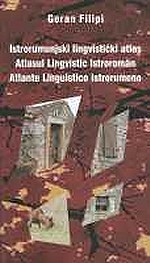|
Tidbits about home: Goran Filipi – Istro-romanian linguistic atlas Faraguna without a raincoat and Poropat without a bed The atlas is tri-lingual (Croatian, Romanian and Italian), and Dr. Filipi was collecting the material for it from 1995 to 2001.
© Novi list
The atlas is tri-lingual (Croatian, Romanian and Italian), and Dr. Filipi was collecting the material for it from 1995 to 2001, talking to speakers in Susnjevica, Nova Vas, Kostrcan, Jasenovik, Miheli, Letaj, Brdo, Skabici, Trnkovci, Zankovci and Zejane. The questionnaire consisted of 1,898 standardized questions, which encompassed concepts from various semantic fields, for example, weather conditions, habits, marriage and family, home and possessions, animals, plants, food, calendar and so on. For each village notations were made of the types of words with their corresponding accents. Where he found complete expressions and sentences, he kept notes of the ones he found interesting and important. To the speech of these Istrian villages he also added the speech of the village of Rudna Glava in the north-eastern Serbia as a comparison with a different Romanian speech on the other side of the Danube, as well as Chacavian speech from Brgud and Cepici. The atlas contains many interesting things: Filipi writes that the first Vlaski livestock herders in Istria are mentioned in the 12th century, however, the Istro-Romanians are probably descendants of the Balkan Vlahi who came from southern Velebit at the end of 15th century and went to Krk (where Vlaski was spoken until 1819) and from there they moved on to Istria. They consider themselves Croats [today], or regionally as Istrians, and they are bilingual (Istro-Romanian and Croatian) from the start. [today] Istro-Romanian was much more widespread than it is today, which is evident by names such as Katunaric, Licul, Fararguna (translates to "without a shepard’s raincoat") or Poropat (translates to "without a bed") and then topographic names as Katun, Kature and Fecori. “It is conceivable that Vlaski will last longer in foreign countries (where they immigrated) than at home” said Prof. Dr. August Kovacec pessimistically, who together with Dr. Petru Neiescu is the editor of the atlas. The Istro-Romanian Linguistic Atlas is important due to its large structure and it documents radical changes, which each twenty years occur in dialects. The edition also contains the map with photographs. This atlas is part of the international scientific project that started with cooperation with the University of Trieste, and before the Istro-Romanian atlas, they released the Istriot linguistic atlas, which dealt with the speaking of south-western Istria before Venetian rule. Translation by: Pino Golja See also: |
|
Created: Friday, July 25,
2003, Last Update:
Tuesday, March 01, 2022
|
